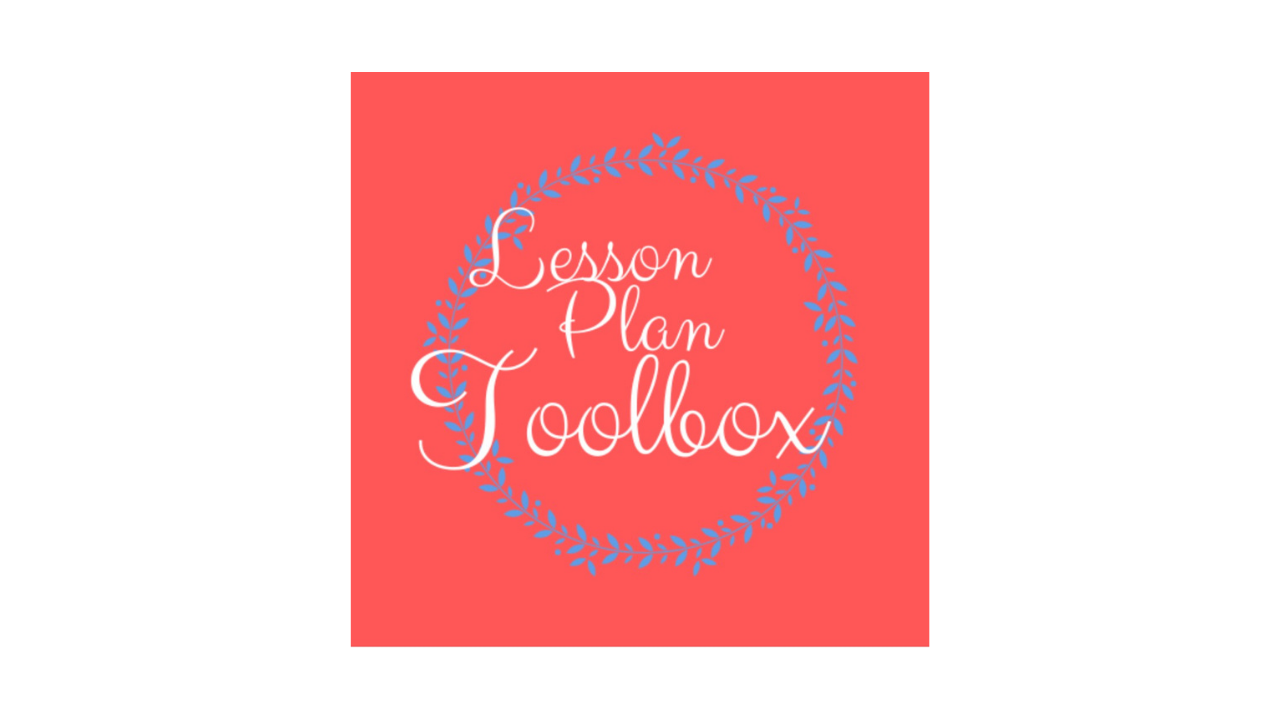
The Power of Gratitude in the Classroom
Click here to watch the YOUTUBE version of this post.
Welcome to our yearlong series on Classroom Management by Design for Primary Teachers. Each week we will give you a new piece to the classroom management puzzle to have in place when you need it this school year. Think of it as a Lego kit just waiting to be built.
Classroom Management by Design for Primary Teachers: The Power of Gratitude in the Classroom

Introduction:
Gratitude isn’t just about saying "thank you"; it’s a mindset that promotes positivity, resilience, and overall well-being. For primary students, especially those who may feel they have little to be grateful for, learning to recognize and appreciate the positives can be transformative. As teachers, cultivating our own gratitude can help us manage stress and model positive behavior for our students. This segment will explore why gratitude matters for both teachers and students and offer practical ways to integrate it into daily classroom life.
1. Why Gratitude Matters for Teachers
Teaching is one of the most rewarding yet demanding professions. Practicing gratitude can help teachers focus on the positives, maintain resilience, and improve their overall outlook. Research suggests that gratitude reduces stress, enhances mental health, and increases emotional resilience.
How Gratitude Supports Teachers:
- Reduces Stress: Regular gratitude practice helps teachers manage stress by focusing on small, positive moments rather than challenges.
- Enhances Mental Health: By acknowledging and appreciating successes, teachers can shift their mindset toward growth rather than dwelling on difficulties.
- Builds Resilience: Gratitude fosters a positive outlook, making it easier to handle daily challenges with patience and flexibility.
Simple Gratitude Practices for Teachers:
- Daily Reflection: At the end of each day, write down three things you’re grateful for, such as a student’s progress, a supportive colleague, or a lesson that went well.
- Thank-You Notes: Consider writing thank-you notes to yourself, students, or colleagues. This simple act can reinforce positive connections and acknowledge the small victories.
- Gratitude Reminders: Place small gratitude reminders around your workspace, such as photos, notes, or quotes that bring positivity into your day.
Model gratitude openly with your students. When they see you focusing on the positives, they are more likely to follow suit.
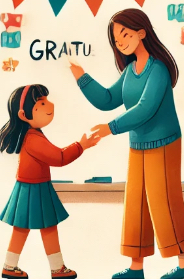
2. The Importance of Gratitude for Students
For students, especially those facing difficult circumstances, gratitude can be a powerful tool to improve emotional well-being, build self-esteem, and enhance empathy. Gratitude helps students recognize that, even when life is challenging, there are still positive aspects to appreciate.
How Gratitude Benefits Students:
- Increases Positivity: Practicing gratitude helps students focus on what’s going well rather than what’s going wrong, fostering a positive mindset.
- Builds Empathy: When students acknowledge what they’re grateful for, they become more aware of others’ contributions, which nurtures empathy.
- Improves Self-Esteem: Recognizing their own strengths and what they bring to the classroom helps students, especially those who struggle with self-worth, see themselves in a positive light.
Addressing Students Who Feel They Have Little to Be Thankful For
It’s common for some students, especially those facing adversity, to struggle with gratitude. Creating a safe and inclusive environment where students feel seen and valued can make a big difference.
Tips for Encouraging Gratitude:
- Start Small: Encourage students to notice small things, like a sunny day or a favorite activity in class.
- Focus on Kindness: Help students recognize the kindness of others, such as a friend sharing a toy or a teacher helping them with a problem.
- Celebrate Personal Strengths: Guide students to appreciate their unique qualities and what they bring to the class community.
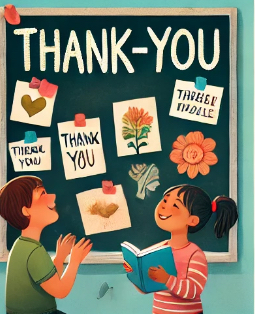
3. Practical Ways to Incorporate Gratitude in the Classroom
Integrating gratitude into daily routines can make it a natural part of the classroom culture, benefiting students’ social-emotional development and creating a positive atmosphere.
a) Gratitude Journals
Provide each student with a gratitude journal where they can write or draw something they’re thankful for each day. This can be done first thing in the morning or at the end of the day as a calming routine.
How to Implement:
- For younger students, encourage drawings or single words. For older students, prompt them to write sentences or stories about what they’re grateful for.
- Give prompts, such as “What’s something nice someone did for you today?” or “What’s a skill you’re proud of?”
b) Gratitude Circle
Dedicate a few minutes each week for a “Gratitude Circle.” In this activity, students sit in a circle and share one thing they’re grateful for. This simple ritual builds community and encourages positive peer interactions.
How to Implement:
- Start by sharing your own gratitude to model the process.
- Offer prompts to help students who may be unsure what to say, such as “What’s something that made you smile this week?”
- Allow students to pass if they’re not ready to share.
c) Thank-You Wall
Create a thank-you wall where students can write thank-you notes to classmates, teachers, or family members. This visual display reinforces positive interactions and fosters a sense of belonging.
How to Implement:
- Provide sticky notes or paper for students to write on.
- Encourage students to acknowledge someone who helped them, made them feel good, or inspired them.
- Review the notes occasionally, highlighting positive actions within the class.
d) Gratitude Scavenger Hunt
Once a month, hold a gratitude scavenger hunt. Provide students with a list of items or people they’re grateful for, like “someone who helped you” or “a favorite part of our classroom.” Students find or write down examples, reinforcing gratitude as a fun, engaging activity.
How to Implement:
- Tailor the scavenger hunt to age levels. Younger students can hunt for objects, while older students can write answers.
- Offer small rewards or words of praise to celebrate their participation.
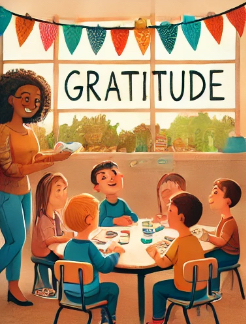
4. Creating a Classroom Culture of Gratitude
Building a culture of gratitude takes consistency, but over time, it can transform your classroom into a more positive, connected space.
Strategies for Cultivating a Grateful Atmosphere:
- Set an Example: Demonstrate gratitude in your own actions, whether by acknowledging students’ efforts, thanking colleagues, or sharing positive reflections with the class.
- Celebrate Small Wins: Encourage students to recognize and celebrate small achievements, reinforcing that gratitude doesn’t require grand gestures.
- Encourage Acts of Kindness: Promote small acts of kindness in the classroom. Each time a student performs a kind act, highlight it and encourage them to reflect on how it made them feel.
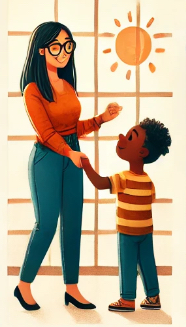
5. Overcoming Challenges in Teaching Gratitude
While gratitude brings many benefits, it may not come naturally to all students, especially those facing difficult circumstances. Here are some strategies for supporting these students:
-Be Patient and Consistent: Gratitude takes practice, and each child will develop at their own pace. Be consistent and patient, giving them time to internalize gratitude over time.
- Encourage Private Reflection: For students uncomfortable with public gratitude, provide personal activities like journaling where they can reflect privately.
-Celebrate Small Progress: Acknowledge any progress, no matter how small. Even a quiet smile or simple “thank you” is a step toward developing a grateful mindset.
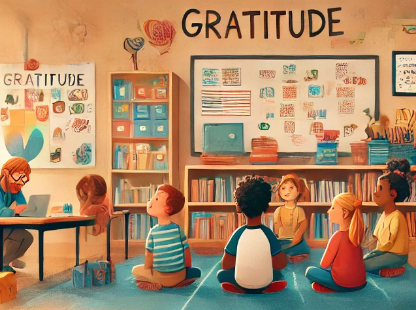
Conclusion: The Lasting Impact of Gratitude on Teachers and Students
Practicing gratitude has the power to reshape our mindset, reduce stress, and build resilience. For students, especially those who may find it difficult to see the positives, gratitude teaches them to focus on what they have, fostering empathy, self-esteem, and happiness. For teachers, gratitude is a tool to enhance well-being, deepen classroom connections, and create a supportive environment.
By integrating gratitude into classroom routines, teachers can build a culture that emphasizes kindness, reflection, and positivity. The benefits reach far beyond the classroom, helping students develop a mindset that will serve them well throughout life.
GUESS WHAT'S COMING...
We are going to be opening the doors to the Lesson Plan Toolbox: Mastering Classroom Management for the Primary Teacher Membership (with LIFETIME access) in January 2025!🤩
We cannot wait to begin helping even more teachers reach success on their classroom management journey!
Be on the lookout to register for the wait list starting next week:)
DID YOU KNOW…
Did you know I organize a FREE Facebook Group for Mastering Classroom Management? We are gearing up for our school year quarter sessions, so if you’re looking for a simple way to improve your classroom management join the already 200+ teachers that have signed up: Mastering Classroom Management Facebook Group
Your ebook GIFT: Empowering Primary Teachers: Effectively Manage Disruptive and Violent Behaviors in the Classroom
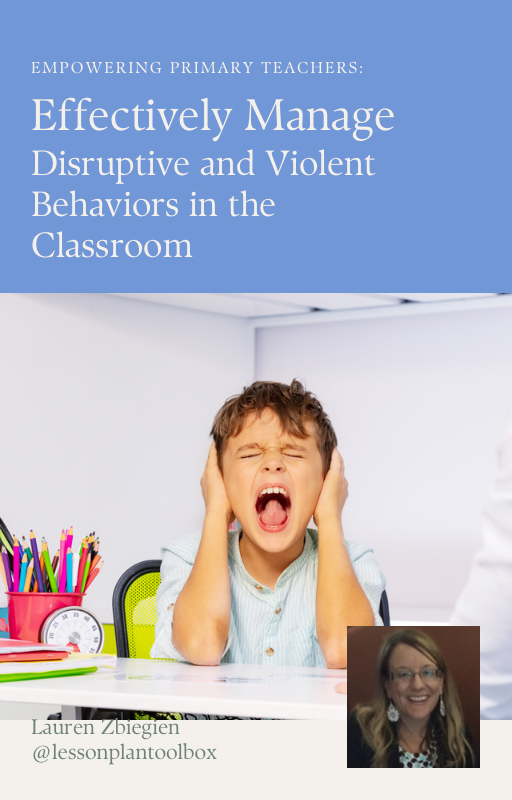
FINALLY…
If you enjoyed the tips in this post, you might also enjoy this series of videos Classroom Management by Design for Primary Teachers:
Reframing the Subconscious Mind: A Primary Teacher's Guide to Personal and Classroom Transformation
Nurturing the Multi-Sensory Abilities of Primary Students
Mastering Parent-Teacher Conferences
The Power of Silence: A Step-By-Step Approach to Incorporating Silence in Your Classroom
The Power of Silence in the Classroom
The Power of Your Words in the Classroom
Don’t forget to follow us over on Instagram!
Teach~Relax~Repeat
Lauren
